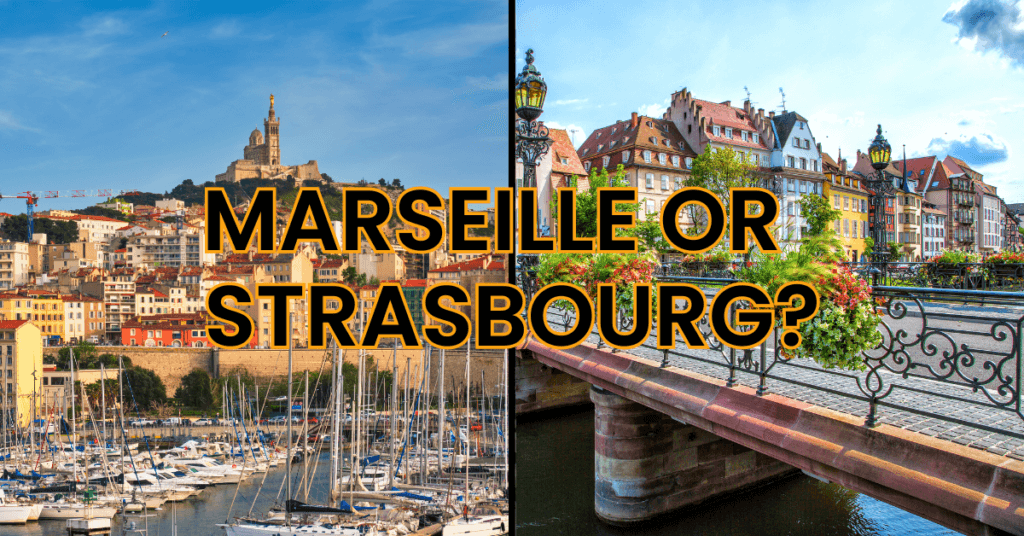Marseille or Strasbourg? Which city should you visit?
Trying to decide between Marseille or Strasbourg for your next French vacation? This guide will help you choose. Let’s do a quick rundown based on interests:
🏛 History Buffs: Being the oldest city in France, Marseille offers a historical depth that is difficult to beat and a wide range of interesting attractions. Strasbourg has a beautiful old town and its cathedral is spectacular but if you’re looking to dig deep into an ancient city, Marseille is for you.
🏖 Beach Lovers: Marseille has direct access to Mediterranean beaches, while Strasbourg is landlocked. If beaches are a priority, Marseille is the clear choice.
🥐 Foodies: Marseille is famous for its seafood, especially the world-famous Bouillabaisse. Strasbourg offers a unique fusion of French and German cuisine like tarte flambée and Spaetzle. If it’s seafood that you’re into, Marseille wins. If you want a unique mix of two incredible cuisines, make your way to Strasbourg.
🌳 Nature Enthusiasts: This isn’t an easy pick. Marseille has the staggeringly beautiful Calanques National Park on its doorstep and the opportunity for hiking, kayaking and swimming. Whereas Strasbourg has the Black Forest just over the German border, with the beautiful mountain ranges, rivers and dense forest. If you prefer a rugged coastline, pick Marseille. If hiking in the Black Forest sounds more appealing, choose Strasbourg.
🏢 Urban Explorers: Strasbourg’s old town and canals make it feel unique compared to most cities, especially in winter with the incredible Christmas decorations and Christmas markets. Marseille is fun to explore but if you’re looking for something a bit different, choose Strasbourg, it feels almost Disney-like.
🍷 Wine Lovers: Strasbourg is very close to the Alsace wine region, known for its excellent white wines this region often gets forgotten about. Marseille is situated in Provence which is famous for its variety of rosé. So, which do you like best? White wine or rose?
🎒 Backpackers: Strasbourg is a bit more affordable but neither of these cities is particularly cheap. Both offer plenty to do and have a range of hostels available. Marseille is the perfect location for exploring the Mediterranean and the French Riviera. Strasbourg offers easy access to Germany, Switzerland and the Black Forest.
👵 Over 60’s: Strasbourg’s relaxed feel, pretty canals and very safe reputation make it a fantastic destination for the over 60’s. Marseille is an amazing city but it can get hectic, plus its hills might be a bit difficult for those less mobile.
👨👩👦 Family-Friendly: For active families who love the beach and outdoor fun, Marseille is a good pick. For those preferring a quieter, more laid-back vibe with cultural activities, Strasbourg might be better. Both have something good for families; it just depends on what you’re into.
If you’re looking for a Mediterranean holiday full of seafood, ancient history and coastline exploration, choose Marseille. However, if you want to visit somewhere a bit different, with a unique mix of cultures, cuisines and incredible Christmas markets, Strasbourg is for you!
If our rundown hasn’t helped you decide, keep on reading to learn more about both of these fantastic cities.
Marseille
Marseille might not boast the romantic allure of Paris or the glamour of the French Riviera, but its unique charm is undeniable. Perched on the Mediterranean coast, Marseille is a melting pot of cultures, an attribute reflected in its vibrant streets and diverse cuisine. With a history dating back to ancient Greece, it’s a paradise for those who love delving into the past.
Its old port, Vieux Port, bustles with fish markets and boats, while the iconic Notre Dame de la Garde basilica watches over the city from a hilltop. But there’s more to Marseille than just history and picturesque views. It’s also a city of dynamic cultural life, with a myriad of museums, art galleries, and music festivals. If you’re in search of a city that combines rich heritage, gastronomic delights, and a laid-back seaside atmosphere, Marseille is the place to be.
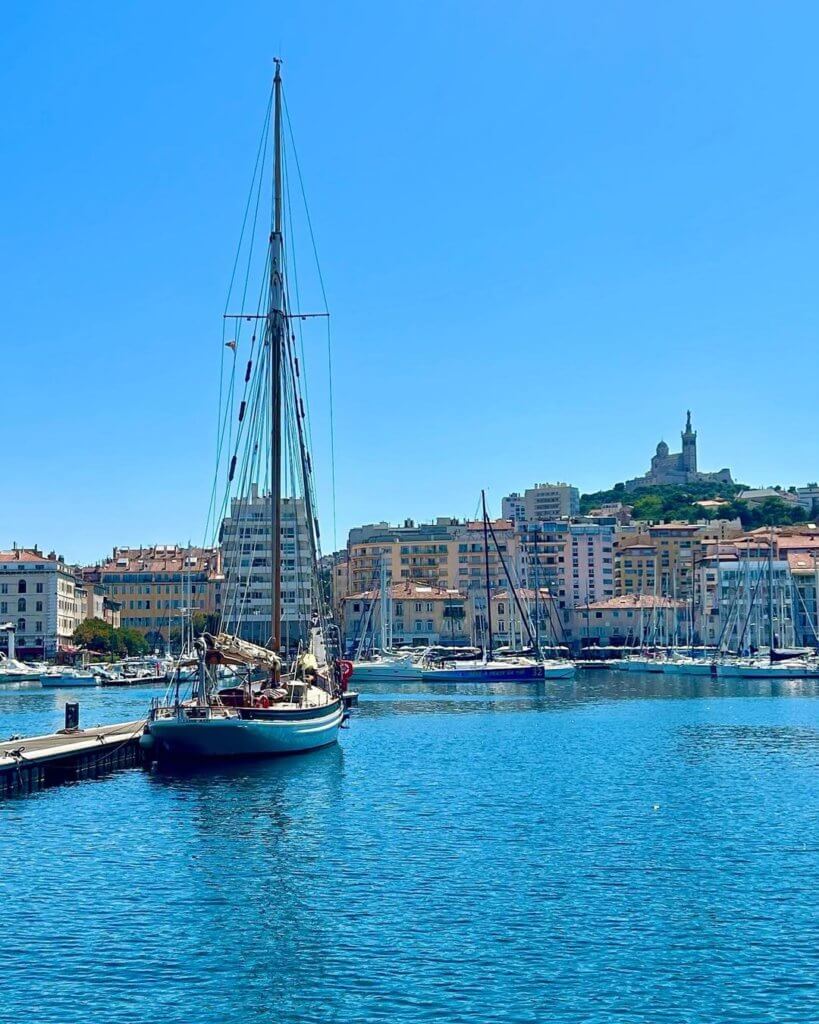
Strasbourg
Strasbourg, a city that straddles the border of France and Germany, offers an interesting fusion of cultures that’s definitely worth exploring. Its historic centre, known as Grande Île, is a UNESCO World Heritage site and is filled with beautiful cobblestone streets and half-timbered houses. But Strasbourg isn’t just about visiting the past. It’s a dynamic city brimming with a unique culture. With plenty of museums, a great art scene and bustling local markets this is a city that caters to most travellers. Plus, the local cuisine is an interesting blend of French sophistication and hearty German food! If you’re looking for a somewhat different destination for your next holiday, Strasbourg should definitely be added to your list!
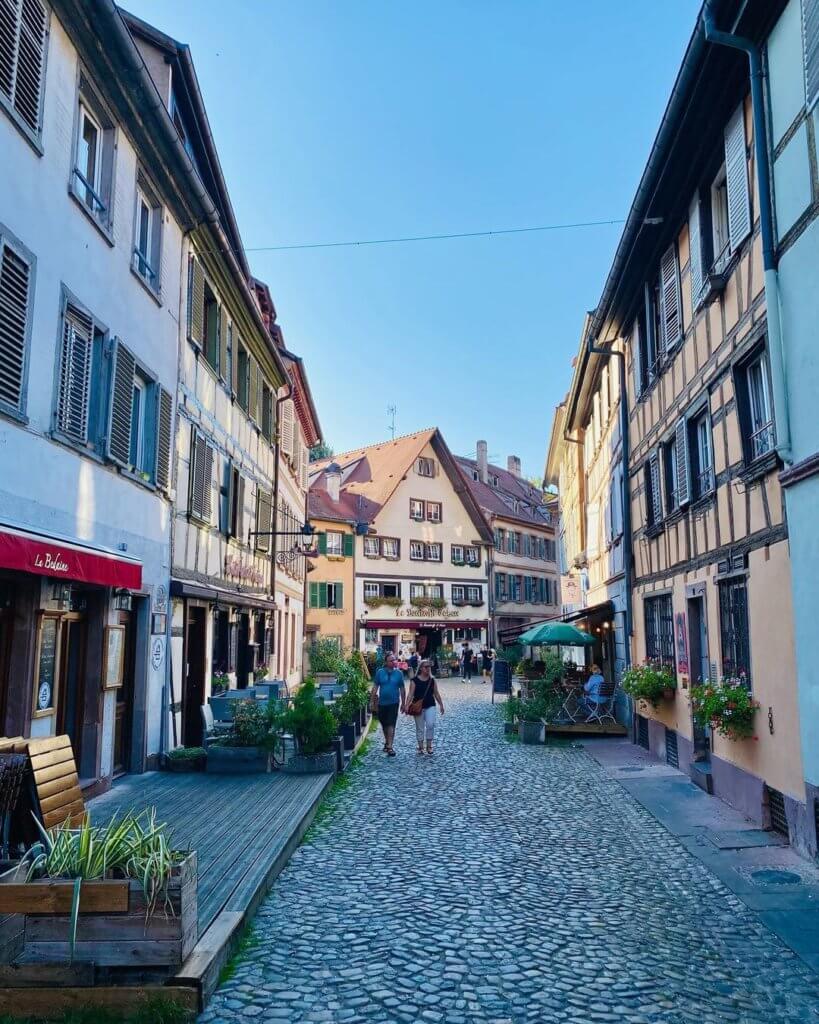
While we’re comparing Marseille and Strasbourg in this post, we’ve also looked at how Marseille stacks up against other cities like Nantes, Cannes or Paris. We’ve linked to those articles below if you want to take a look!
Pros and Cons of Marseille and Strasbourg
Marseille Pros:
- 🏛 History: Oldest city in France, loaded with historical sites.
- 🏖 Beaches: Direct access to Mediterranean beaches.
- 🍴 Cuisine: Known for seafood and Bouillabaisse.
- 🌳 Nature: Calanques National Park offers stunning outdoor experiences.
- 🍷 Wine: Close to Provence wine regions.
Marseille Cons:
- 💶 Cost: Tends to be pricier.
- 👫 Crowds: Can get busy, particularly in tourist seasons.
- 🌄 Terrain: Hilly areas might be tough for some to get around.
Strasbourg Pros:
- 🏛 Architecture: Old town and stunning cathedral.
- 🎄 Seasonal: Famous Christmas markets and decorations.
- 🍴 Cuisine: Fusion of French and German dishes.
- 🍷 Wine: Close to the Alsace wine region.
- 👵 Accessibility: Flat terrain, relaxed vibe, safe reputation.
Strasbourg Cons:
- 🏖 No Beach: It’s landlocked, so no beach fun.
- 💶 Cost: Not the cheapest, but more affordable than Marseille.
- 👫 Crowds: Can get busy during the Christmas market season.
Which City is Safer? Marseille or Strasbourg?
Marseille has a crime index of 54.87, which puts it in the moderate risk category. The city has had issues with property crime, such as petty theft and vandalism. Neighbourhoods like the Northern districts might require added caution, especially after dark. The central areas and tourist spots, however, are generally well-patrolled and offer a relatively secure experience for visitors.
In contrast, Strasbourg boasts a lower crime index of 40.42. Despite being a bustling city, most crimes reported are of a lesser degree like pickpocketing. Areas that witness an increase in serious crimes are usually located far from the main tourist hubs, reducing the likelihood of tourists encountering them. As is wise in any city, it’s good to be alert and cautious, particularly during the evening and night.
How long to stay in Marseille
Deciding on the ideal length for your Marseille visit can be a bit complex, given the rich cultural, historical, and natural attractions the city offers. The city has an abundance of experiences that can keep you engaged for days on end, but how long to stay will largely depend on your personal interests.
If your primary goal is to experience the unique Mediterranean vibe of the city, sample local seafood, and explore the historic district, a 2 to 3-day visit might suffice. This should give you ample time to wander through the narrow streets of Le Panier, the city’s old town, take a leisurely walk around the Vieux Port, and indulge in authentic bouillabaisse at a seaside restaurant.
For travellers drawn to Marseille’s rich history and culture, a stay of 4-5 days would be ideal. This gives you enough time to visit the iconic Basilique Notre-Dame de la Garde, explore the Museum of European and Mediterranean Civilisations (MUCEM), and take a ferry to the historic Château d’If, without feeling rushed.
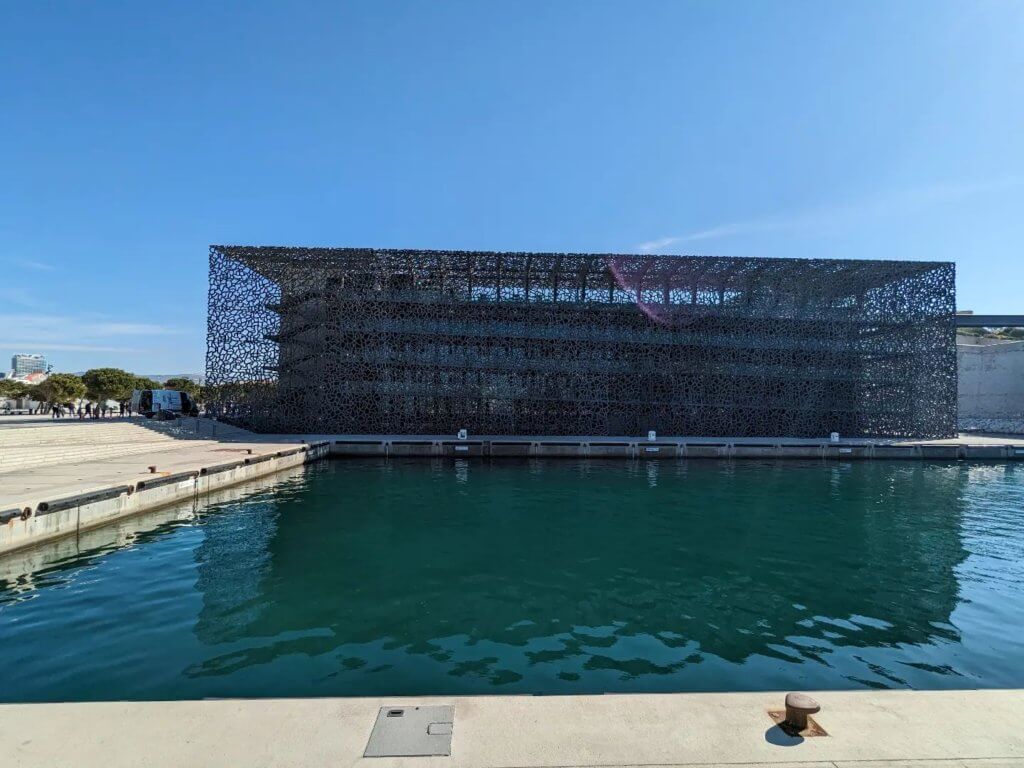
However, if you’re like me and prefer a deeper immersion into the local culture, you might want to consider staying longer. A week in Marseille would provide ample time to not only explore the city’s attractions, but also to enjoy its beautiful beaches, take day trips to the nearby Calanques National Park or the charming town of Cassis, and truly soak up the laid-back Marseille lifestyle.”
How long to stay in Strasbourg
Choosing the ideal duration for a trip to Strasbourg can be a bit of a challenge, given the city’s blend of German and French culture, its rich history, and captivating architecture. The length of your stay ultimately depends on your individual interests and the pace at which you wish to explore.
If your plan is to experience the city’s main attractions, wander through the charming La Petite France district, and taste the region’s mouth-watering dishes like ‘choucroute’ or ‘tarte flambée’, a stay of 2 to 3 days would be ample. This will provide enough time to marvel at the majestic Strasbourg Cathedral, get lost in the quaint, cobblestone streets, and savour the unique gastronomy that Strasbourg offers.
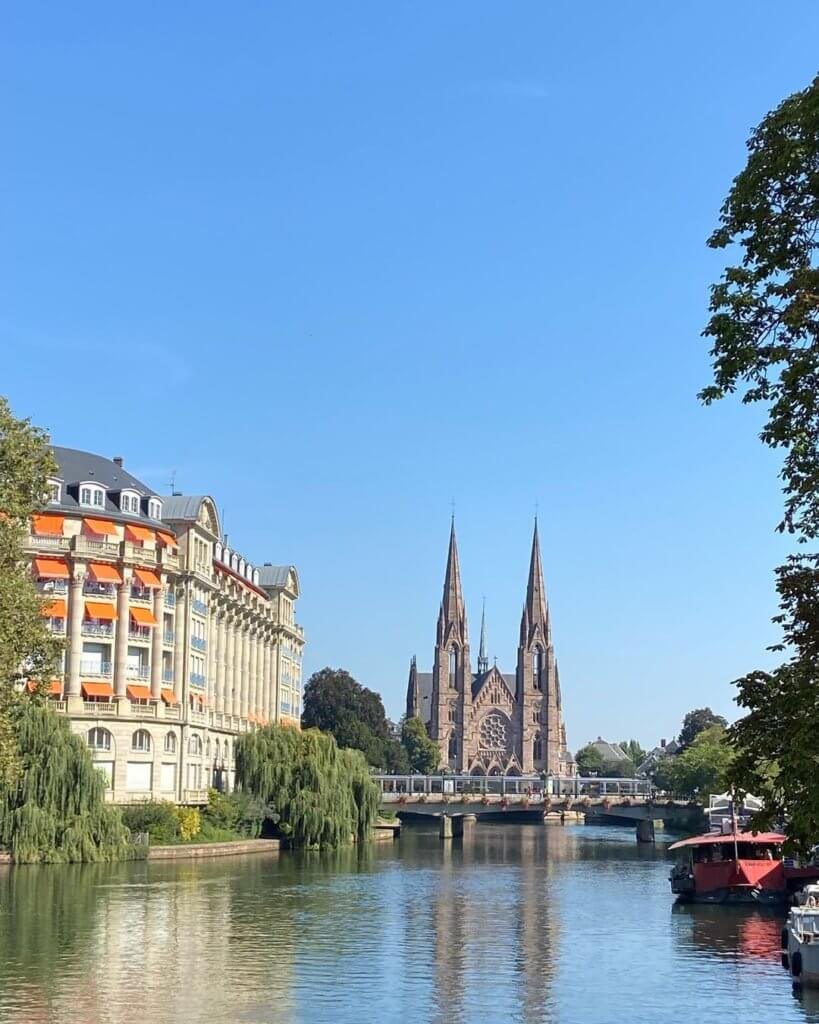
However, if you’re aiming to immerse yourself deeper into Strasbourg’s fascinating history and culture, consider extending your stay to 4 to 5 days. This will afford you the chance to explore the various museums and galleries, such as the Alsatian Museum or the Museum of Modern and Contemporary Art, visit the European Parliament, and take leisurely strolls along the scenic canals, all at a relaxed pace.
For those wanting to truly absorb the Alsatian lifestyle, spending a week in Strasbourg can be a fantastic option. This duration not only provides enough time to thoroughly explore the city’s nooks and crannies but also allows for relaxing café visits and day trips to nearby gems like the charming town of Colmar or the stunning Haut-Koenigsbourg Castle. A week in Strasbourg enables you to fully appreciate the unique blend of cultures and the relaxed pace of life in this beautiful city.
How much is food and drink in Marseille and Strasbourg?
| Item | Marseille Price Range | Strasbourg Price Range |
|---|---|---|
| 🍺 Beer | €5 – €8 | €5 – €7 |
| 🍷 Glass of Wine | €4 – €10 | €3 – €10 |
| ☕ Coffee | €2 – €4 | €1.50 – €3 |
| 🍽️ Meal at Midrange Restaurant | €20 – €40 per person | €20 – €40 per person |
These are estimated average prices for food and drink in both Marseille and Strasbourg. Actual prices may vary based on the specific establishment and location.
How much is it to stay in Marseille or Strasbourg?
| Accommodation Type | Marseille Price Range | Strasbourg Price Range |
|---|---|---|
| Luxury Hotel | €150 – €500 or higher | €150 – €500 or higher |
| Midrange Hotel | €80 – €150 | €70 – €150 |
| Budget Hotel | €40 – €80 | €40 – €70 |
| Hostel | €20 – €40 | €20 – €40 |
These are estimated average prices for accommodation in both Marseille and Strasbourg. Actual prices may vary based on the specific hotel or hostel, time of year, and location within the city.
When is the best time to visit Marseille?
Spring 🌼: From April to June, the weather in Marseille is comfortably warm, with temperatures averaging between 15-23°C (59-73°F). The city isn’t too crowded, and the beautiful Calanques (rocky inlets) are perfect for hiking and picnicking.
Summer ☀️: July and August are the hottest months, with temperatures reaching 30°C (86°F). It’s a great time for beach activities, water sports, and enjoying the vibrant nightlife. However, it’s also peak tourist season, so it can get crowded, and prices for accommodation can be higher.
Autumn 🍂: September to October is another lovely period to visit. The weather remains warm but becomes more comfortable. It’s an ideal time to explore the city and its surrounding countryside without the summer crowds. Also, the sea is still warm enough for swimming.
Winter ❄️: From November to March, Marseille experiences mild winters compared to other parts of France. While it isn’t beach weather, it’s a good time to explore the city’s museums and historical landmarks. There are fewer tourists, and you might find some great deals on accommodation.
However, always remember to check the local weather forecast before your trip, as weather conditions can change unexpectedly.
When is the best time to visit Strasbourg?
Spring 🌷 (March to May) in Strasbourg is a delightful period, with comfortable temperatures and the cityscape coming alive with blooming flowers. This is an excellent time to explore the picturesque streets of Petite France or take a leisurely boat ride along the Ill River.
Summers ☀️ (June to August) in Strasbourg are warm, ideal for outdoor exploration of the city’s rich historical sites and the stunning Parc de l’Orangerie. This season also coincides with several festivals such as the Strasbourg Summer Festival and the Longevity Music Festival, adding an extra layer of excitement for visitors.
Autumn 🍂 (September to November) is a special time in Strasbourg, being a part of the Alsace wine region, it marks the period of grape harvest and wine-making. This season allows visitors to witness the wine-making process and taste some of the finest wines. The weather during this period remains pleasant, and the changing hues of the vine leaves create a stunning backdrop.
Winter ❄️ (December to February) in Strasbourg is truly enchanting. The city is famed for hosting one of the oldest Christmas Markets in Europe, turning the city into a twinkling fairytale land. While it can be quite cold, the festive spirit and fewer tourists make it a unique time to visit.
Average Monthly Temperatures
| Month | Marseille (High / Low °C) | Marseille Rain | Strasbourg (High / Low °C) | Strasbourg Rain |
|---|---|---|---|---|
| January | 12° / 5° | 6 days | 5° / -1° | 7 days |
| February | 13° / 6° | 4 days | 7° / -1° | 7 days |
| March | 16° / 8° | 4 days | 12° / 2° | 8 days |
| April | 18° / 9° | 5 days | 16° / 5° | 8 days |
| May | 23° / 13° | 4 days | 20° / 9° | 10 days |
| June | 26° / 17° | 2 days | 23° / 13° | 10 days |
| July | 29° / 19° | 1 day | 26° / 14° | 9 days |
| August | 29° / 19° | 2 days | 25° / 14° | 9 days |
| September | 26° / 16° | 3 days | 21° / 10° | 7 days |
| October | 21° / 13° | 6 days | 15° / 7° | 8 days |
| November | 16° / 9° | 5 days | 9° / 3° | 8 days |
| December | 13° / 6° | 5 days | 5° / 0° | 8 days |
Getting around Marseille:
Marseille has a good public transportation system, including buses, trams, and a metro system. Taxis are also available but can be expensive. Walking is a great way to explore the city centre, but if you want to cover more ground, consider renting a bike or taking a boat tour. The Marseille city pass is worth getting if you’re planning on using public transport.
Getting around Strasbourg:
Strasbourg boasts an efficient public transportation system, primarily made up of trams and buses, operated by the Compagnie des Transports Strasbourgeois (CTS). The city’s tram network is one of the most extensive in France, connecting various parts of the city and making it easy to move around.
The ‘Strasbourg à Vélo’ bike-sharing scheme is an excellent option for those preferring a more active way to explore the city. The city is bicycle-friendly with numerous dedicated bike lanes and routes, making it a delight to navigate on two wheels.
Walking is another wonderful way to experience Strasbourg, especially within the Grande Île, which is a UNESCO World Heritage site and contains many of the city’s historic attractions.
Taxis and ride-hailing services like Uber are also readily available, but fares may be higher during peak tourist seasons or during rush hours. Be sure to check rates before your journey.”
Top things to do in Marseille
- Old Port (Vieux Port): This bustling harbour is the heart of Marseille. It’s lined with cafes and restaurants, and it’s the perfect place to enjoy a bouillabaisse, the traditional Provençal fish stew. Don’t miss the fish market that takes place every morning at the port.
- Le Panier: Just north of the Old Port is Marseille’s old town, Le Panier. Wander through its narrow, winding streets to discover charming squares, art galleries, boutiques, and cafes.
- Notre-Dame de la Garde: This iconic basilica sits on the city’s highest point and offers panoramic views of Marseille. Its interior is equally stunning with beautiful mosaics.
- The Calanques: These rocky inlets with crystal clear waters are perfect for hiking, swimming, and boating. They can be found along the coastline between Marseille and Cassis.
- MuCEM (Museum of European and Mediterranean Civilisations): This museum is notable not only for its comprehensive exhibits but also for its stunning architecture and sea views.
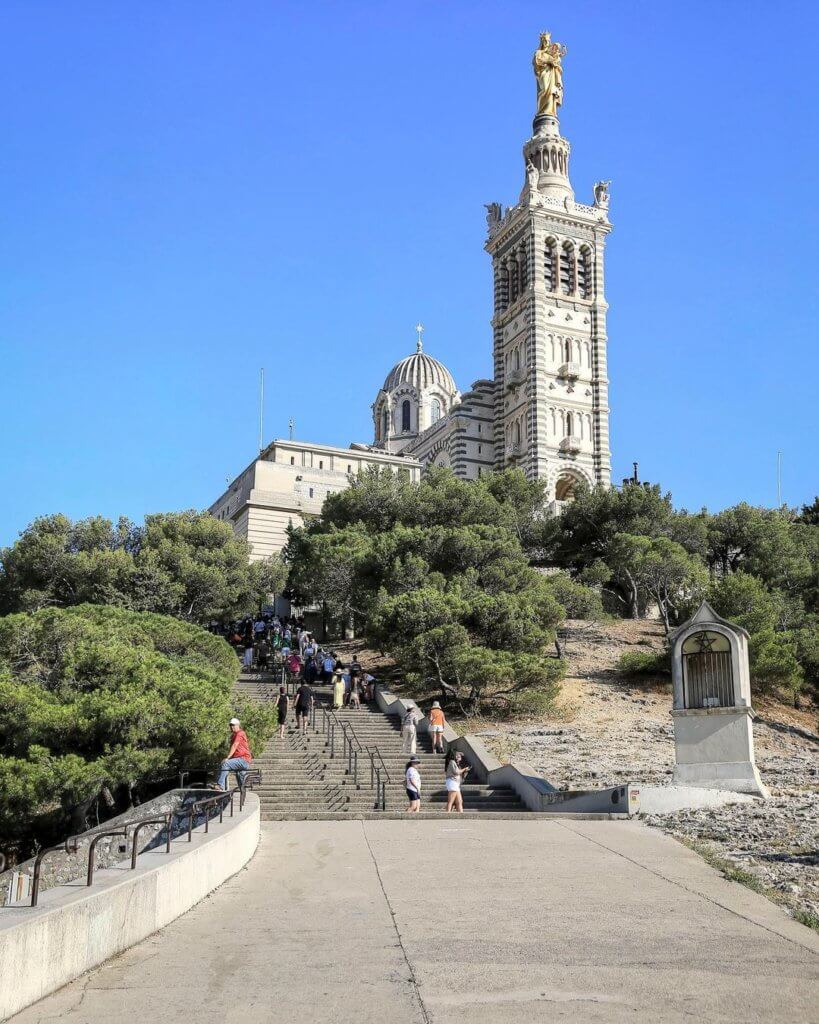
Top things to do in Strasbourg
- Strasbourg Cathedral: The Strasbourg Cathedral, also known as Notre Dame Cathedral, is a stunning masterpiece of Gothic architecture. Its astronomical clock is an engineering marvel that shouldn’t be missed. Climb to the top for panoramic views of Strasbourg and the surrounding region.
- Petite France: This is the city’s most picturesque district, filled with half-timbered houses, quaint canals, and narrow streets. Petite France is a UNESCO World Heritage site and truly is the essence of Strasbourg’s charm.
- European Parliament: Strasbourg is home to the European Parliament, one of the main institutions of the European Union. When in session, you can take a guided tour of the Hemicycle – the parliamentary assembly room.
- Boat Tour: A boat tour on the Ill River is a perfect way to appreciate the city’s mix of French and German architecture, as well as the beautiful nature that surrounds it.
- Parc de l’Orangerie: A visit to this lovely park makes for a relaxing break from sightseeing. Here, you can find a small zoo, a boating lake, and beautifully landscaped gardens.

How to spend three days in Marseille
Day 1: Exploring the Heart of Marseille
Kick off your visit to Marseille by exploring the vibrant Vieux Port (Old Port). Watch fishermen selling their catch, enjoy a cup of coffee at one of the numerous waterside cafés, or simply admire the hundreds of moored yachts. Next, stroll to Le Panier, Marseille’s old town, with its charming cobbled streets, colourful houses, artisan shops, and inviting cafés. After lunch in one of the local bistros, take a ride on the tourist train or climb the hill to visit Notre-Dame de la Garde, the city’s iconic basilica, offering panoramic views of Marseille. End your day with a delicious seafood dinner back at the Vieux Port.
Day 2: Discovering Culture and History
Start your second day at the MuCEM (Museum of European and Mediterranean Civilisations), known for its exhibits as well as its stunning architecture. Then make your way to the Palais Longchamp, home to Marseille’s fine art museum and natural history museum, surrounded by a grand park. After lunch, consider visiting Château d’If, a former fortress and prison on a small island off Marseille’s coast, famously featured in Dumas’ ‘The Count of Monte Cristo.’ Wrap up the day with dinner at one of Marseille’s excellent restaurants, perhaps trying the city’s signature dish, bouillabaisse.
Day 3: Nature and Leisure
Devote your last day in Marseille to the Calanques National Park. Depending on your preference, you can hike, kayak, or take a boat tour to explore these stunning limestone cliffs and turquoise waters. Make sure to pack a picnic to enjoy by the sea. After returning to the city, enjoy a leisure stroll along La Corniche, a scenic seaside boulevard, or visit Prado Beach for a more relaxing time. End your trip with a farewell dinner, relishing the flavours of Provençal cuisine.
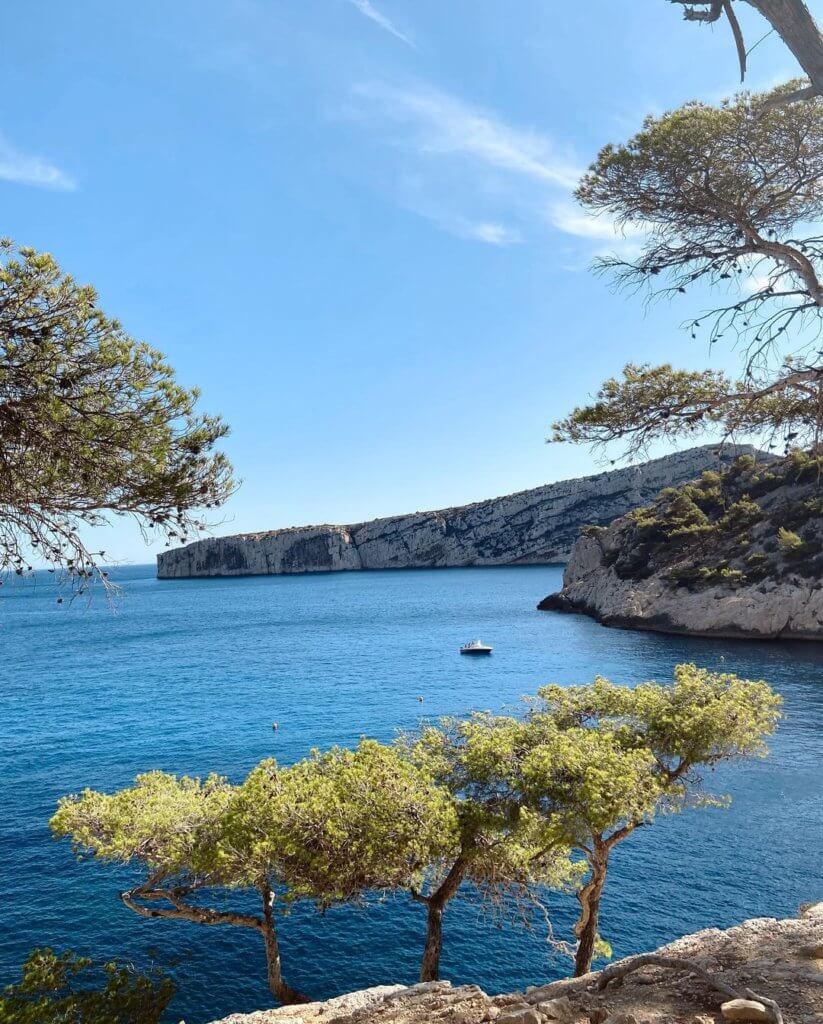
How to spend three days in Strasbourg
Day 1: Exploring Strasbourg’s Historic Core
Begin your first day in Strasbourg by visiting the impressive Strasbourg Cathedral. Climb up the tower for a stunning panorama of the city. Once you’ve marvelled at the cathedral’s Gothic splendour, take a leisurely stroll through the charming district of Petite France, with its beautiful half-timbered houses and picturesque canals.
For lunch, savour a local delicacy like Tarte Flambée at one of the traditional Alsatian winstubs (wine lounges) in the area. Spend your afternoon exploring the museums around the city centre such as the Alsatian Museum or the Fine Arts Museum.
As the day draws to a close, enjoy a river cruise on the Ill for a unique perspective on Strasbourg’s beautiful architecture.
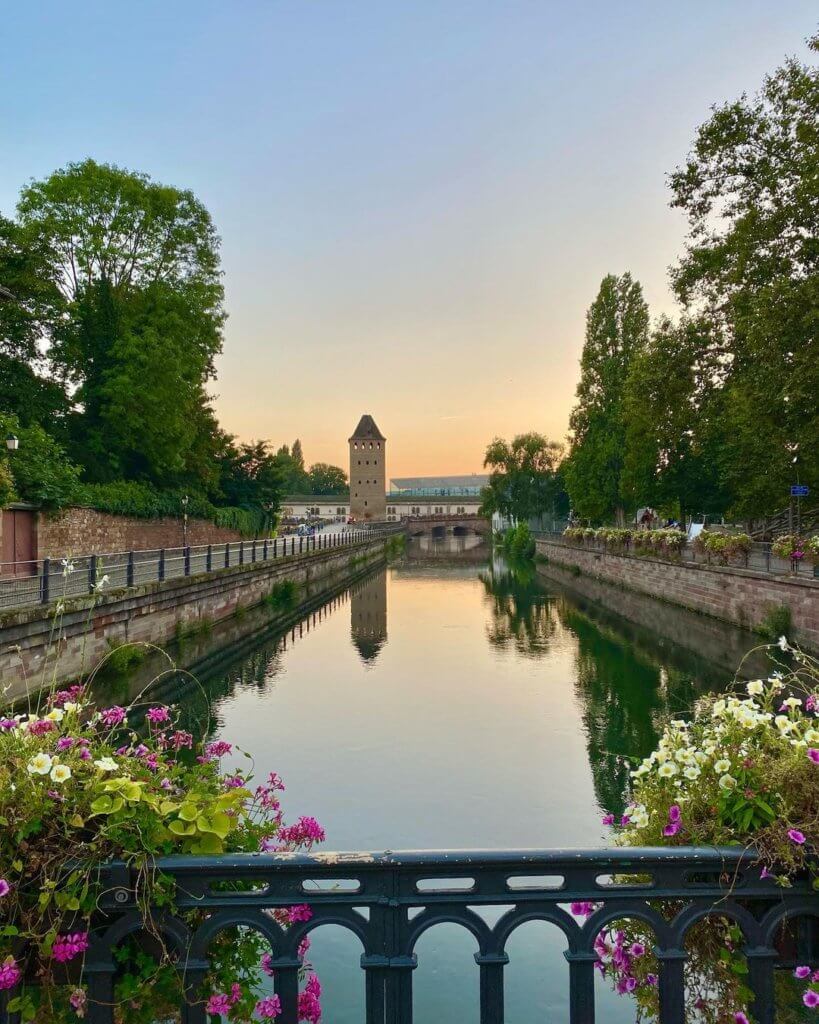
Day 2: A Day at the European Institutions
Start your second day with a visit to the European Parliament. Take a guided tour of the Hemicycle and learn about the workings of the EU. From there, head to the nearby European Court of Human Rights and the Council of Europe, which are also part of the European Quarter.
In the afternoon, relax in the Parc de l’Orangerie. Take a peaceful boat ride on the lake, visit the small zoo, or just enjoy a leisurely stroll in the gardens.
Day 3: Exploring the Surrounding Region
On your final day, embark on a day trip to one of the nearby attractions. The Haut-Koenigsbourg Castle, about an hour’s drive from Strasbourg, offers stunning views of the Alsace region. Alternatively, the city of Colmar, with its charming old town and the famous Unterlinden Museum, is also worth a visit.
Back in Strasbourg, conclude your visit with a farewell dinner at one of the city’s excellent restaurants, perhaps trying another Alsatian speciality, such as Coq au Riesling or Choucroute Garnie.
Gareth is an avid city adventurer with a particular passion for finding amazing food! There’s quite literally nothing he doesn’t like. He spends most of his travelling time trying to find great restaurants and cafes to eat at. Alongside trying local street food which he loves! He’s done most of his travelling in Europe so far but would love to visit Japan and Mexico
When not travelling you can find Gareth boxing, running, or in the gym. He’s got a passion for exercise and loves physical challenges.
You can contact him at gareth@thecityadventurers.com

